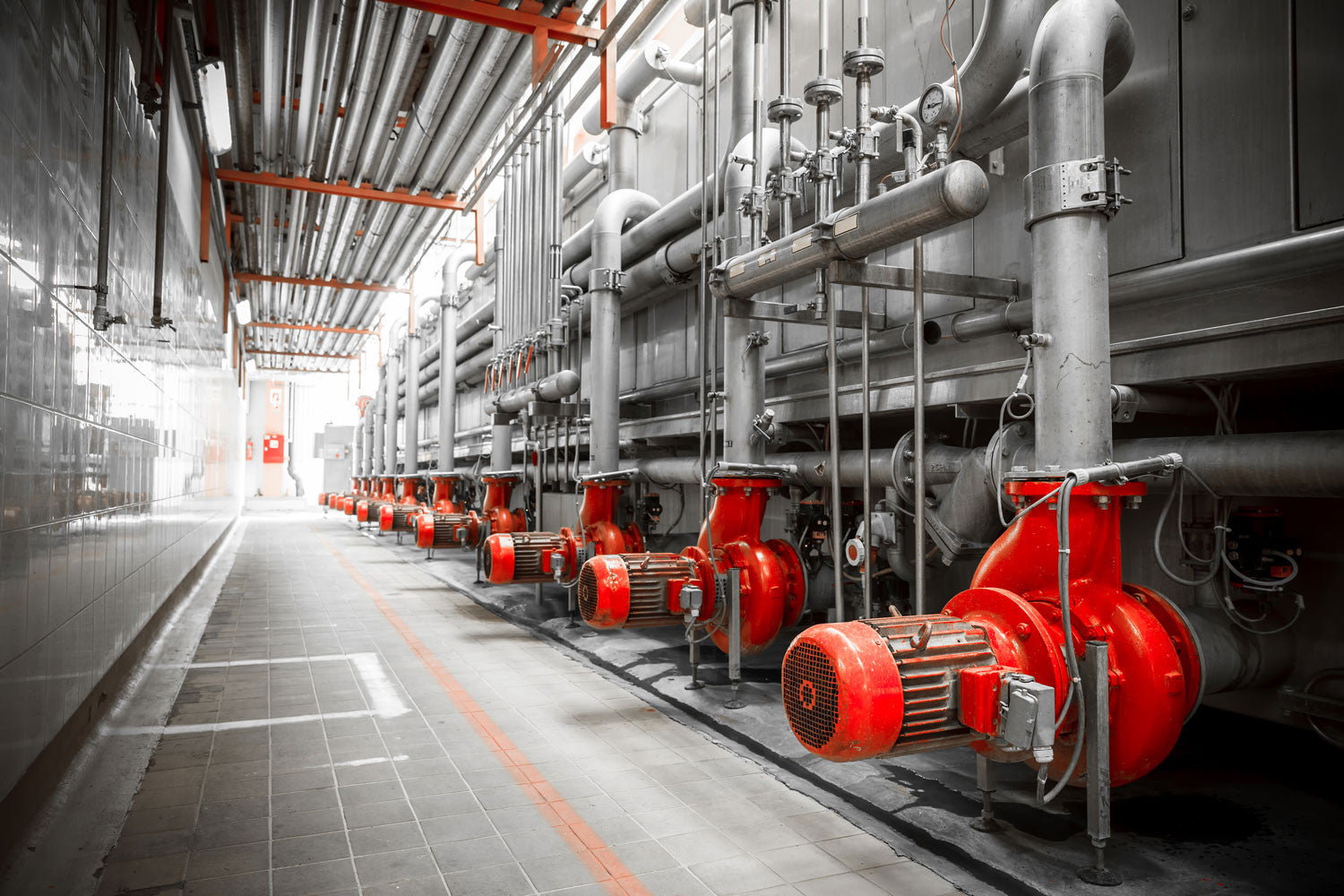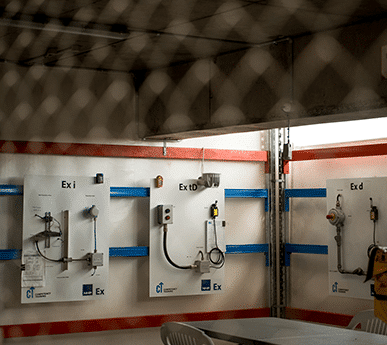The 10-Minute Rule for Roar Solutions
Wiki Article
5 Easy Facts About Roar Solutions Explained
Table of ContentsThe Best Strategy To Use For Roar SolutionsExcitement About Roar SolutionsSome Known Questions About Roar Solutions.
In such an atmosphere a fire or explosion is feasible when three standard conditions are fulfilled. This is often referred to as the "unsafe area" or "burning" triangle. In order to protect installments from a possible surge a method of evaluating and classifying a possibly unsafe area is needed. The purpose of this is to guarantee the appropriate option and setup of devices to ultimately stop an explosion and to make certain safety of life.
(https://www.merchantcircle.com/blogs/roar-solutions-miami-fl/2024/12/Empowering-You-with-EEHA-Courses-and-First-Aid-Expertise/2864288)
No equipment ought to be mounted where the surface temperature level of the devices is above the ignition temperature of the offered threat. Below are some typical dirt hazardous and their minimal ignition temperature level. Coal Dirt 380C 225C Polythene 420C (melts) Methyl Cellulose 420C 320C Starch 460C 435C Flour 490C 340C Sugar 490C 460C Grain Dirt 510C 300C Phenolic Resin 530C > 450C Aluminium 590C > 450C PVC 700C > 450C Residue 810C 570C The possibility of the danger being existing in a concentration high adequate to create an ignition will differ from place to location.
In order to classify this risk an installation is divided into locations of threat depending upon the quantity of time the harmful exists. These locations are described as Areas. For gases and vapours and dusts and fibres there are 3 zones. Zone 0 Area 20 A hazardous atmosphere is very most likely to be existing and might be present for extended periods of time (> 1000 hours annually) or even continually Zone 1 Zone 21 A hazardous ambience is possible but not likely to be existing for long durations of time (> 10 450 C [842 F] A category of T6 means the minimum ignition temperature level is > 85 C [185 F] Dangerous location electrical devices maybe created for usage in greater ambient temperature levels. This would suggested on the ranking plate e.g. EExe II C T3 Ta + 60C( This implies at 60C ambient T3 will not be gone beyond) T1 T1, T2, T3, T4, T5, T6 T2 T2, T3, T4, T5, T6 T3 T3, T4, T5, T6 T4 T4, T5, T6 T5 T5, T6 T6 T6 A T Course score of T1 indicates the maximum surface temperature produced by the tool at 40 C is 450 C. Presuming the associated T Course and Temperature score for the equipment are proper for the area, you can constantly utilize a tool with a much more stringent Department ranking than needed for the location. There isn't a clear answer to this question however. It really does depend upon the sort of devices and what repairs require to be performed. Tools with details test procedures that can not be carried out in the area in order to achieve/maintain 3rd party score. Need to come back to the manufacturing facility if it is before the tools's solution. Area Fixing By Authorised Employee: Complicated testing might not be required nevertheless details procedures might require to be complied with in order for the equipment to maintain its 3rd party rating. Authorised employees have to be utilized to do the work properly Repair service need to be a like for like substitute. New component must be taken into consideration as a straight substitute requiring no special screening of the equipment after the fixing is full. Each piece of devices with a hazardous score ought to be assessed separately. These are outlined at a high level below, but also for more thorough information, please refer straight to the standards.
Roar Solutions for Dummies
The equipment register is a comprehensive data source of equipment records that includes a minimum set of areas to determine each item's place, technical parameters, Ex lover category, age, and ecological information. This information is critical for tracking and handling the equipment successfully within hazardous areas. On the other hand, for regular or RBI tasting assessments, the quality will certainly be a mix of Thorough and Close inspections. The proportion of In-depth to Shut inspections will be figured out by the Tools Threat, which is evaluated based on ignition risk (the likelihood of a source of ignition versus the chance of a flammable environment )and the dangerous location category( Zone 0, 1, or 2). This variation will additionally influence the resourcing needs for job preparation. As soon as Whole lots are defined, you can develop sampling plans based on the example size of each Whole lot, which describes the number of arbitrary tools items to be evaluated. To determine the needed sample dimension, 2 facets need to be reviewed: the dimension of the Lot and the category of evaluation, which shows the level of initiative that should be applied( minimized, regular, or raised )to the evaluation of the Lot. By incorporating the group of assessment with the Great deal dimension, you can after that develop the appropriate rejection requirements for a sample, suggesting the allowable variety of malfunctioning products located within that example. For more details on this process, please describe the Energy Institute Standards. The IEC 60079 basic recommends that the maximum period in between assessments must not go beyond 3 years. EEHA assessments will additionally be carried out outside of RBI campaigns as component of set up maintenance and equipment overhauls or repairs. These inspections can be credited towards the RBI sample sizes within the impacted Whole lots. EEHA inspections are carried out to determine mistakes in electric devices. A heavy scoring system is essential, as a single tool may have numerous faults, each with varying degrees of ignition threat. If the mixed rating of both evaluations is much less than two times the mistake score, the Lot is regarded appropriate. If the Lot is still considered inappropriate, it needs to undergo a full assessment or justification, which may activate more stringent inspection methods. Accepted Lot: The root causes of any type of mistakes are determined. If a common failing mode is located, added tools might call for examination and repair work. Mistakes are categorized by intensity( Safety and security, Integrity, Housekeeping ), guaranteeing that urgent issues are examined and resolved promptly to reduce any kind of effect on safety or procedures. The EEHA data source ought to track and tape-record the lifecycle of faults along with the rehabilitative actions taken. Carrying out a robust Risk-Based Examination( RBI )strategy is critical for ensuring compliance and security in taking care of Electrical Equipment in Hazardous Locations( EEHA) (electrical refresher course). Automated Mistake Rating and Lifecycle Management: Easily take care of faults and track their lifecycle to enhance evaluation accuracy. The intro of this support for risk-based inspection additionally reinforces Inspectivity's position as a best-in-class option for regulative conformity, as well as for any asset-centric assessment usage case. If you have an interest in learning much more, we welcome you to ask Going Here for a presentation and find exactly how our remedy can change your EEHA monitoring processes.
The smart Trick of Roar Solutions That Nobody is Discussing

In terms of eruptive risk, a harmful location is a setting in which an eruptive atmosphere is existing (or might be expected to be existing) in quantities that require special precautions for the building, installation and use devices. hazardous area course. In this article we discover the challenges encountered in the office, the danger control measures, and the called for expertises to function securely
These substances can, in specific conditions, develop eruptive atmospheres and these can have major and awful effects. Many of us are familiar with the fire triangle get rid of any type of one of the 3 elements and the fire can not happen, however what does this mean in the context of hazardous areas?
In many circumstances, we can do little about the degrees of oxygen in the air, but we can have considerable influence on sources of ignition, for example electrical equipment. Harmful areas are recorded on the dangerous area category drawing and are identified on-site by the triangular "EX-SPOUSE" indication. Here, amongst other essential details, areas are split into three kinds depending on the danger, the probability and period that an explosive environment will certainly exist; Area 0 or 20 is deemed the most hazardous and Zone 2 or 22 is considered the least.
Report this wiki page